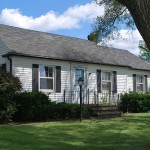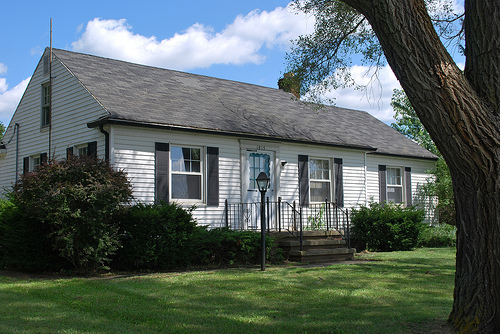
Would you buy it?
I recently read a comment attributed to Joel Greenblatt (although I can’t find the exact quotation anywhere) suggesting that the most sensible way to value a house is by using its rental yield. If you do this, by considering rental income as the property’s equivalent of a share’s earnings, then I think you should be able to use Ben Graham’s intrinsic value formula to calculate the property’s intrinsic value. The formula would be useful here because it would also allow you to plug interest rates and rental income growth into the equation producing, hopefully, a logical intrinsic value.
As a reminder, here is the formula:
Where:
V = Intrinsic Value
EPS = Earnings Per Share
8.5 = Ben Graham’s Price/Earnings multiple for a company that does not grow
2g = 2 times annual expected growth rate
4.4 = the average rate on AAA corporate bonds over the three years prior to the year in which the formula was devised (1962)
Y = the current yield on AAA corporate bonds.
So, if you were to adapt this formula to value a property:
Assuming the house is a single share, I will use the annual rental income of the property for the EPS. If there is a service charge, a cost that is usually borne by the landlord, then that should be deducted. Local or council taxes are usually borne by the tenant, so I will disregard those. I will also deduct one month’s rent to cover any vacant months and necessary reinvestment in the property (cleaning bills after the students have moved out etc.)
For the annual growth rate, I will use the Bank of England’s inflation target (2%) plus 1.5%. 1% of this is because I am dubious as to the sincerity of the Old Lady in striving for its target and am also mindful of its record thus far. The other .5% I will add because that is what local authorities add to RPI to calculate the rent due on the unowned portion of their shared ownership properties (i.e. RPI + 0.5%). Therefore, I will use 3.5% as the growth rate, and 2g will become 7.
Y is used to bring Graham’s 4.4 risk-free rate up to date. The current quality ten-year corporate bond yield is around 4%, so I will use this.
To apply the formula to a flat that is let out for £1500 per month with a service charge of £150 and one blank month would result in the following:
Intrinsic Value = (14,700 x (8.5 + 7) x 4.4)/4 = £250,635
You can also play around with the prevailing interest rate by changing 4 to a more neutral rate (Mark Carney is beginning to talk hawkishly). Using a bond yield of 6, for example, would lower the property’s intrinsic value to £167090. Do these valuations make sense? Can this formula, which was intended for growth shares, be used for properties?

